Posts tagged with Synthesis
Here you can find a listing of all posts with the tag Synthesis on my page.

Sep 11, 2023 Tutorial
In this video, I'm going to show you my setup for synthesizing snare and rimshot sounds using the pulley grid in my DAW. I use the pulse oscillator because it already has a lot of overtones, so I don't need to use as much post-effects distortion. I set the frequency to around 150-160 Hz for a deep snare sound. I use an AD envelope to trigger the sound and apply an EQ5 in the PostFX to analyze and shape the signal. By adjusting the sync, I can create two partials or amplify the second harmonic. I add a Moog low pass filter and use the shape output of the AD envelope for frequency modulation. This creates a nice snare sound. I also add some noise using a noise burst and a mixer. I shape the noise with segments and use a high pass filter. I then apply a hard clip and use dither and diffusion for added spice. The EQ is crucial for shaping the sound, and by cutting below 1k and boosting around 1k, I can create a rimshot sound. I can also tweak the settings to create deep snare sounds. I can detune the oscillator slightly for a wider sound. Overall, there are many possibilities for customization using these knobs and EQs. I can also add pitch modulation if desired. Finally, I can apply a convolution effect to add roominess to the sound. This setup is great for drum and bass, dubstep, and other genres, providing a clean and focused sound.
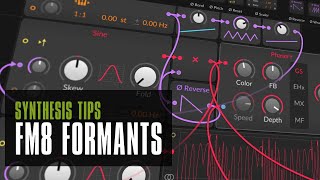
Aug 28, 2023 Tutorial
In this video, I talk about my journey of using FM8 for bass lines and how I incorporated that knowledge into using the Scroll in the Grid. I explain how I used one oscillator for a pure sine bass sound and another oscillator with different wave shapes to create overtones. I show how you can recreate these sounds in the Grid by using formant wave shapes and modulating them with a sine oscillator. I demonstrate the use of filters and phasers to further modify the sound. Overall, I discuss how this journey of experimenting with different techniques allowed me to create interesting and unique bass patches.
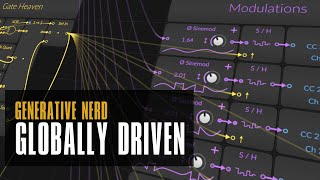
Jul 31, 2023 Tutorial
In the video, I showed how to make music in Bitwig Studio using global modulators. I used two step modulators, one for values and one for melody. I connected them to a polymer synthesizer and routed them through a node grid. I used the values from the step modulator to modulate various parameters in the synthesizer, such as decay time, amplitude envelope, and mix levels. I also used the melody step modulator to generate notes and trigger them using clock and XOR modules. I demonstrated how changing values in the step modulators can instantly modify the sound and trigger different sequences. Overall, it was a fun and nerdy way to create music in Bitwig Studio.

Jul 24, 2023 Tutorial
In this video, I demonstrate how to create a trumpet or saxophone sound in Bitwig's grid using subtractive synthesis. I avoid using samples, wavetables, or physical modeling. The sound is shaped using pinch and bend modules, as well as a phaser, before going through a filter and an amplitude modulation module. I also add filtered noise to simulate the air going through the horn. To simulate the characteristics of different instruments, I use fixed frequencies in an EQ module. An impulse response and delay are used to simulate room and add space to the sound. The main trick of the preset is shaping the phase signal with pinch and bend modules, which creates trumpet-like harmonics from a sine wave. I use Bitwig's expression modulator to map timbre, pitch bend, and pressure to add expression to the sound. I show how to do this in a separate polygrid. It took some time to find the right modulation amounts and timings, but the result is a cool and realistic trumpet sound. The preset is available for Patreon and YouTube subscribers, while others can try out the techniques I demonstrated.
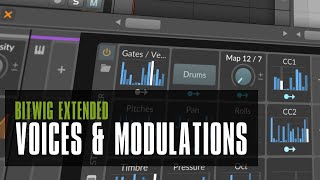
Jul 05, 2023 Tutorial
In this video, I share two tricks for Bitwig Studio that can be used in certain situations. The first trick is about creating unison in devices or synthesizers that don't have a built-in unison feature. By duplicating the input notes and assigning them to different MIDI channels with slightly different pitches, you can create the effect of unison. I demonstrate how to do this using the note grid and show how to adjust the pitch and panning for each duplicated note. By using this trick, you can achieve a chorus-like effect and stack multiple voices. The second trick is useful for performing with generative patches or creating evolving sounds over time in Bitwig Studio. I show how to modulate the intensity of modulation parameters using the intensity output of a macro. By selecting the modulation target in the synthesizer and clicking on the modulator handle, you can access a second amount slider that allows you to control the modulation amount. This can be helpful for adding dynamics and variation to your performances or arrangements. Overall, these tricks can expand your creative possibilities in Bitwig Studio and I hope you find them helpful.
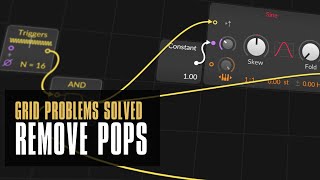
Apr 07, 2023 Tutorial
In this video, I explain why Sine-Oscillators can give back crackles when triggered with an AD, and I share a trick to solve this issue. When using a short attack time and triggering the Sine-Oscillator, we start at minus one, which causes a crackle. To solve this, we can ease out the attack time, or we can move the cycle to a zero crossing by using a constant and the phase knob. However, a long decay time can still cause crackles when re-triggering the oscillator. To solve this, we can use a comparison with the AD output and a gate input to wait until the decay phase is finished before re-triggering the oscillator. Additionally, I suggest starting at zero value to prevent crackles and explain how this applies to other sounds. Overall, following these tips can help solve crackle issues in Sine-Oscillators.
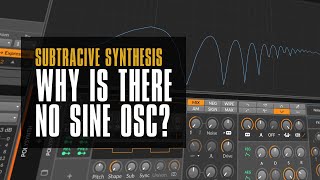
Mar 07, 2023 Tutorial
In this video, I explain why there is no sine wave in a classical subtractive synthesizer. This is because sine wave has no overtones and therefore makes no sense in terms of subtractive synthesis. I explain how the filter section can be used to target and amplify the fundamental frequency as well as other partials in the harmonic series. I also provide an overview of other synthesis methods such as additive synthesis, Wavetable synthesis, FM synthesis, phase distortion, vector synthesis, granular synthesis, and physical modeling. In each of these methods, sine waves make more sense. Finally, I explain why a saw and pulse waveforms are used in polysynth - because they give different harmonic overtones.
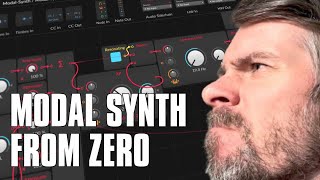
Jun 24, 2022 Tutorial
In this video, I showed how to create a modal synthesizer polyphonic synthesizer inside Bitwig Studio using the Poly-Grid. I explained how to use a noise burst, an XP filter, and an envelope to create the basics of the synthesizer, as well as how to use transpose and ratios to create partials. I also talked about how to use macros to manipulate reverb, velocity, and attack, as well as how to use a slow machine and delay to add texture and depth. Finally, I discussed how to use a select switch to toggle between different synthesizer settings.
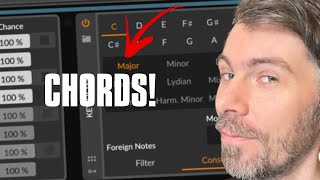
Dec 15, 2021 Tutorial
In this video, I share some tips and tricks for using the diatonic transposer in Bitwig Studio to create jazzy chord progressions. I show how to use a multi note device in combination with a key filter and transposer to create a chord brush. I also demonstrate how to use a pitch 12 to modulate multi notes between major and minor chords. Lastly, I show how to create chord gradients by stacking notes in seven semitone steps.
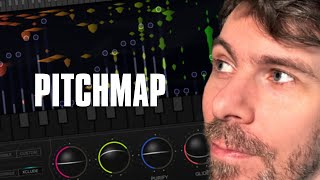
Sep 20, 2021 Tutorial
I recently bought the pitch map plugin by Zynaptiq, and I've been experimenting with it to create unusual workflows. I can use it to correct a pitch to a different note, and I can also use it to turn percussion sounds into synths, or use samples in the sampler. I can also use it on my Eurorack and analog synths to get diatonic chords. Overall, pitch map is a really useful plugin that I'm having a lot of fun experimenting with.

May 05, 2021 Tutorial
In this video, I showed what the new Smart EQ 3 plug-in from Sonible from Austria can do. I tested it out on my own track called Craft and went through how to use it for drums, bass, and the master. I showed how to apply different profiles and manual EQ, as well as how to use the grouping feature to make sure the tracks work well together. I also mentioned that Smart EQ 3 is aware of the context EQing and prioritizes certain things over others. Lastly, I suggested that users try out the trial version to get a feel for the plug-in, and if they like it, to purchase it.
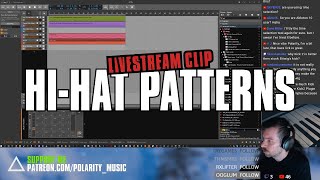
Nov 30, 2020 Tutorial
In this video, I'm using a drum machine to create a beat. I'm using four hi-hats and a clap, and then I'm experimenting with quantizing and layering different sounds in order to create a more natural and chilled out beat. I'm also using a synthesizer to create a kick drum and I'm adjusting the levels and the speed to create the exact sound I'm looking for.
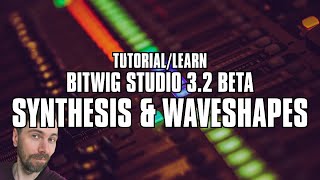
May 11, 2020 Tutorial
In this video, I discuss different methods of synthesizing sounds inside the grid, including subtractive synthesis, additive synthesis, frequency modulation, physical modeling, and granular synthesis. I provide detailed tutorials on how to create your own oscillator and change the waveform over time using modules like steps, phaser, and value. I also demonstrate how to create an additive synthesizer by adding multiple sine waves with different frequencies and how to use a filter to modify the sound. Additionally, I show how to use granular synthesis and a resonator to create interesting sounds. Overall, the goal is to encourage viewers to create sounds for their projects rather than focusing on designing instruments. If you have any questions or comments, please leave them below, and don't forget to subscribe, like, and support the channel if you enjoy the content.
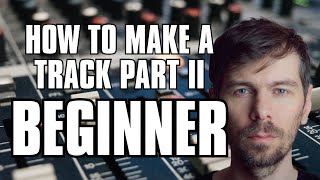
Feb 17, 2020 Tutorial
In this tutorial, I will guide you in setting up Bitwig Studio on your computer, installing packages, selecting your sound card and Meti controller, and starting a new project. I will also show you how to use keyboard shortcuts and the left side of Bitwig Studio's info pane, which is contextual and changes depending on the selected track. We will also cover the transport display, loop function, and the help menu for instruments and effects. Overall, this tutorial will provide a beginner-friendly overview of Bitwig Studio and its features, with the goal of making music production more accessible to everyone.
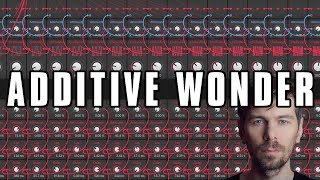
Aug 05, 2019 Tutorial
In this video, I want to give a big thank you to all my Patreon donators for supporting my music and community work. It's the first time in my career that I'm getting regular income just for music, and it feels great. Now, let's talk about additive synthesis. I've created an experiment using an additive synthesizer in the grid, which consists of a sine wave generator and multiple partials in different frequencies. By layering these partials, we can create complex sounds. I explain how to adjust the frequencies and introduce modulations to make the sound more interesting. I also demonstrate how to narrow the partials down to the fundamental frequency for different effects. The preset I created is called additive wonder, and you can download it from my GitHub repository. If you have any ideas or solutions on creating partials with less CPU usage, please let me know. Thank you for watching, and I hope you have fun experimenting with this preset. Bye!

Jul 20, 2019 Tutorial
In this video, I take samples from the Intimate Noise page and try to create a track. I download the free sample pack and explore the different folders, including pads and drones, one shots, and sequences. I start by using the kick samples and creating a drum loop. Then, I incorporate some of the pad samples to add texture to the track. I manipulate the sounds using different effects and plugins, such as the Hornet plugin and the Sonable smart compressor. I also create a baseline using the notes provided by the pad sample. I continue to build the track by adding more elements, including chords, FX sounds, and melodies. I use a pitch shifter and random modulators to add character and variation to the sounds. I group the different elements together and apply sidechain compression using the kick drum to create a pumping effect. Finally, I do a quick mastering using the Allzone Elements tool to ensure the track reaches the desired loudness. Overall, the goal is to create a deep house track using the samples from the Intimate Noise sample pack.
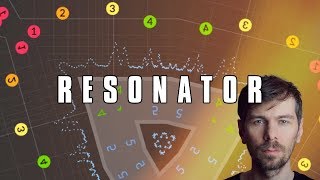
Jul 10, 2019 Tutorial
In this video, I talk about the resonator device in Bitwig Studio, which is like an EQ but can do a lot more. Someone asked about creating an 808 kick drum, and I show how to do it using the resonator. I explain the synthesis method for an 808 kick drum and demonstrate how to create a sine wave burst, use an ADSR envelope, and mix it with the resonator output to achieve the desired sound. I also show another use case for the resonator, which is using it to create melodies or chords from a drum loop. By setting different octaves of the resonator bank to different notes, you can create unique melodies. Lastly, I show how to use the resonator to add tonality to vocals and create pads. Overall, the resonator is a versatile device that has a lot of potential for creative sound design.
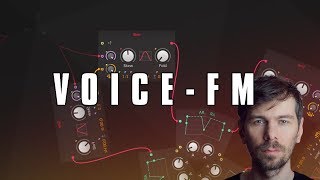
Jun 28, 2019 Tutorial
In this video, I demonstrated how to use your voice as a phase input signal to an oscillator. I showed how you can use the pulley grid and the hardware input module to phase distort a triangle oscillator using your voice or microphone as an input. I also discussed how you can shape your voice using distortion, high-pass, and low-pass filters before applying it to the phase input. Additionally, I showed how you can use the zero crossing module to create a pitch signal from a sine wave, allowing you to sing and have the oscillator follow your pitch. Overall, using your voice as a phase input signal can lead to interesting and unique sounds in bass lines or lead sounds.

Jun 14, 2019 Tutorial
In this video, I show you how to create a tape stop effect using Bitwig's FXgrid device. I use delays, ADSR, and gain volume to create the effect. By adjusting the delay buffer size, you can achieve the slow down and speed up effect of a tape stop. I also demonstrate how to create flutter effects using tape emulation plugins. Additionally, I explain how to create wave tables in Bitwig by using wave files and the sampler instrument. By using the cycles mode and wave table position knob, you can scan through the wave tables and create unique sounds.
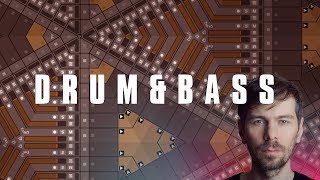
May 26, 2019 Tutorial
In this short video, I wanted to share a project with you that contains five different scenes for creating drum and bass tunes. Each scene has different loops and tracks, separated into categories like kicks, snares, bass, and atmospherics. I've added some compressors to glue the sounds together, but there's not much processing going on. I use a main kick on every draft, sometimes layered with different top kicks for texture. The bass sounds are created with the Phase Four synth, which I find works well for drum and bass. I've also included step sounds, a piano, and a pad sound. This project is a starting point for creating your own drum and bass tracks, and I'll continue adding more to it in the future. I would love any feedback or suggestions for additions or changes. You can download the project from my GitHub repository and have fun experimenting with it. Thank you for watching!
More Tags to choose from:
posts Bitwig Deutsch Tutorial FromScratch Talk German Skyence articles Guidelines Knowledge PDF Brain Neurosience Webtool Tempo Mixing bitwig-guides Audio-FX Poly-Grid helpers Chords Harmony Scales music-videos Ambient Hardware Jam Drum-and-Bass Music Mixtape fawm Behringer Moog release Polarity Bandcamp polarity-music Bitwig-2.0 VST-Plugin Grid Rhythms oscillators Modulation Frequency Modulation Phase Modulation synthesizers Video Editing Gravity Modulator Modulator Synth Midi Step-Sequencer Granular Sampling Presets Glitch-Hop Generative Plugins Sound-Design Bass Synthesis Audio-Effects Bitwig-3.0 Update Preset Community Wave Table Synthesizer FX Section Lab Update music-production Let-It-Go Decision-Making Creativity FX Automation Modulators Melodies Note-Grid Percussion Resonator Kick Drum Pads MPE Controllers Modular Workflow Opinions Synthwave Track from Scratch Outrun Challenge Delay Delay-plus Reverb Additive-Synthesis Auto gain staging Hornet LU meter Normalizer Sketch VSTs Filter Noise Resonance Loudness Groove Bitwig-3.2 Bitwig-3.1 Replace VST Note-FX Polysynth Synthesizer Tips-Tricks Synths MPE Roli Polyphonic Physical-Modeling Racism Music Industry Social Issues Equality Inspiration Evolving-Sounds Convolution Live streaming Discord bot Interaction Sampler Grain Distortion Sonible Analysis fm-synthesis EQ-plus Drums Compressor Feedback EQ Glitch Comp Filter Ultra Reservoir Polyphonic Mode Peak Limiter EQ-5 VCV-Rack Comb Filter Modal Synthesis Wave-Shaping Saturation Bitwig-3.3 Bitwig-4.4 Follower Threshold Max Value EQ-2 FX-Grid Mid-Side Split Infiltrator Devious-Machines Randomization Atlas Bespoke DAW Pitchmap Zynaptiq Harmony-Theory Unfilter Melodic-Techno Transposer Transient-Shaper MinimalAudio XLN-Audio XO Sononym Cosmos Arturia Valhalla Filters Bitwig-4.3.4 FM8 Native Instruments Bleass Psych Limitation Clap Extension free Eurorack Grid-From-Scratch Arrangement dpMeter tbproaudio Diva Monark Pure-Verb Pure-Comp Pure-Limit Gridnik Instrument Launchpad Risers Transitions Micro-Arrangement Global-Modulators Workflow-Tips Vector Synthesis Waveforms Phaser Bleass Voices Bitwig Studio Plugin Pitch Shifter Vocoder MIDI Input Polymer Wavetable Recording Audio2Midi Learning Problem-Solving Research wisdom Psychology Wave Table Plug-ins Gear Polygrid OpenSource PlugData Clever-Audio-Plugin-Clap Interface Sidechain Pitch Effects AI download FM-synths machine-learning soniccharge Sound-Generator SynPlant Compiler Heavy-Compiler Formant Current Granular-Synthesis Vector XY-Instrument Touch-Designer Video-Edit Visuals Beginners Bitwig-5.1 Sync Signals xlnaudio additive Sequencer Euclidean Bitwig-5.1.2 No-Grid Stock Finishing-Songs Thoughts Browser Jazz M1 Polyrhythm Polymeter Clip-Launcher AudioThing Lese Techno Routing Spectral tests paulxstretch Triton Grains Patreon Utility Analogue Bitwig-5.1.6 Kilohearts Project Bitwig-1.3.16 Tegeler Amiga Bitwig-5.1.7 Trance Bitwig-5.2b1 Theming Giveaway Bitwig-5.2b2 Segments Ableton Bitwig-5.2b5 key-tracking zplane Bitwig-5.2b7 Calculations Markov Shift-Register Bitwig-5.2b8 Bitwig-5.2b10 Voice-Stacks Bitwig-5.2b11 Dynamics Bitwig-5.2b12 Bitwig-5.2b13 Bitwig-5.2 sonnox dadalife Bitwig-5.2.1 Bitwig-5.2.2 Bitwig-5.2.3 Problems Audio-Tracks reaction EDM Bitwig-5.2.4 Kickdrums fft Software Bitwig-5.2.5 process.audio Impulse-Responses Bitwig-5.3b1 Freq-Shifter Bitwig-5.3b2 Bitwig-5.3b3 Bitwig-5.3b4 StateOfBitwig Bitwig-5.3b5 Mastering bitwig-grid-course



















